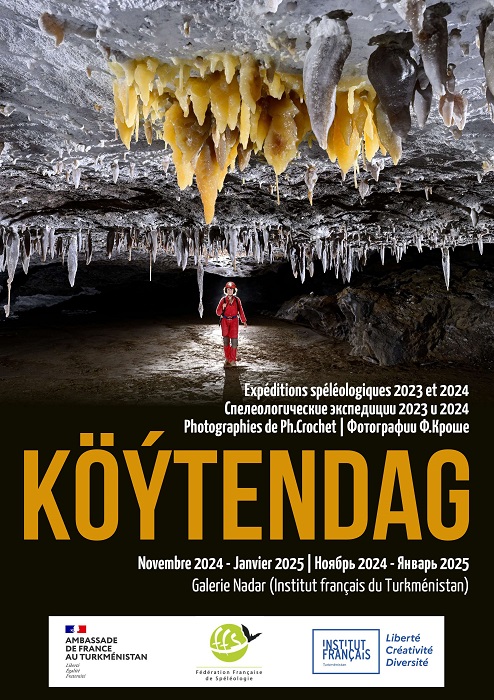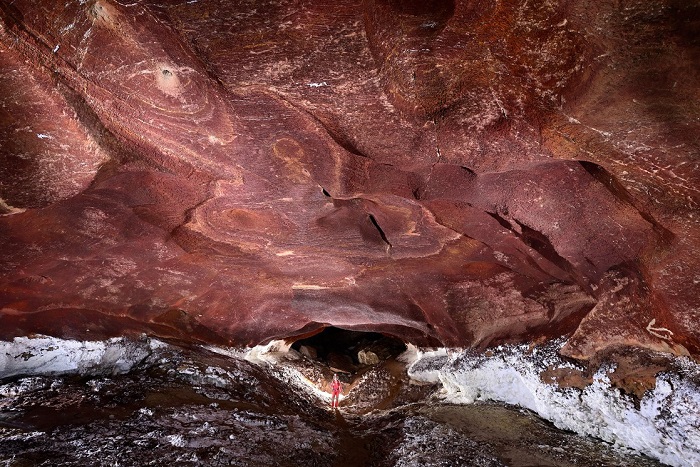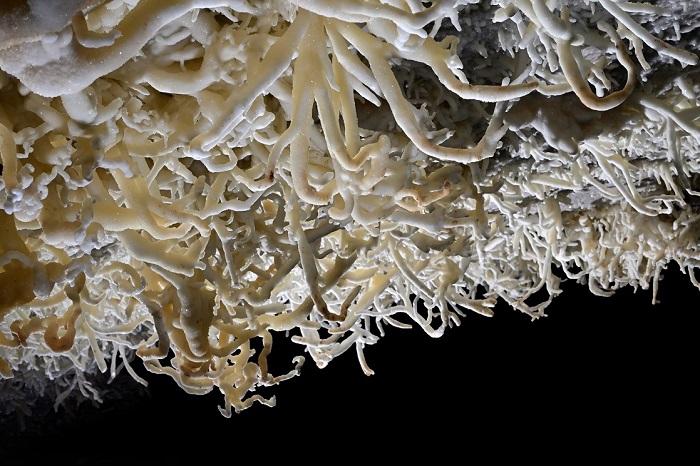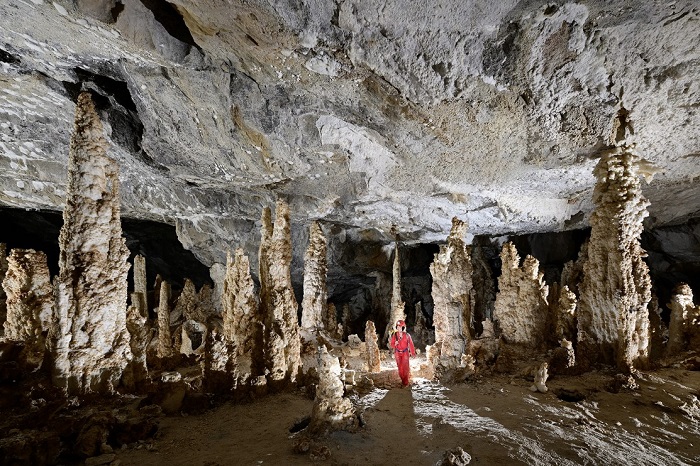The French Institute in Turkmenistan, in cooperation with the French Federation of Speleology (FFS), is holding an exhibition of original photographs representing the work of French speleologists in the caves of the Koitendag massif, carried out during two expeditions by speleologists of the French Federation of Speleology under the leadership of Jean‐Pierre Gruat, French Institute in Turkmenistan reports.
 Photographing cave features is one of the areas of various scientific work carried out during two expeditions to Koitendag (in 2023 and 2024). In April 2024, seventeen multidisciplinary speleologists (fifteen Frenchmen, one Belgian and one Slovak) conducted documented work in the caves of the Koitendag mountains: exploration, topography, photogrammetry, karstology, geology and biospeleology. They studied about ten caves, including the Geophyzicheskaya, Hashim‐Oyuk and Cupp‐Coutunn.
Photographing cave features is one of the areas of various scientific work carried out during two expeditions to Koitendag (in 2023 and 2024). In April 2024, seventeen multidisciplinary speleologists (fifteen Frenchmen, one Belgian and one Slovak) conducted documented work in the caves of the Koitendag mountains: exploration, topography, photogrammetry, karstology, geology and biospeleology. They studied about ten caves, including the Geophyzicheskaya, Hashim‐Oyuk and Cupp‐Coutunn.
A total of 19 km of topography was performed and a complete geophysical photogrammetry of the cave was implemented for subsequent 3D reconstruction. The study of wildlife in caves and karst springs allowed the discovery of species not previously studied in Turkmenistan. Entrance steps located in the rocks of the canyons have also been explored.
The processes of cave formation have been studied by geologists and karstologists. This work was carried out on the basis of measurements and surveys conducted in the field.
Philippe Crochet and Annie Guiraud were responsible for the photographic documentation. As recognized experts in underground photography, they have been working in caves around the world for many years. When Jean-Pierre Gruat invited them to participate in the Koitendag project, they immediately agreed. And they weren’t disappointed: in fact, the caves of the Koitendag massif on the border with Uzbekistan offer everything a professional photographer could dream of.
In particular, the Geophysicheskaya Cave presents exceptional characteristics: an abundance of gypsum in all its forms (candlesticks, giant hollow stalagmites, needles, flowers, branches, crusts, etc.), aragonite, extensive galleries with red ceilings, huge colorful draperies. It’s a real feast for the eyes. Concentration of geological phenomena. The aim was to capture all the diversity that has been preserved better in this cave compared to previously damaged caves as a result of mining operations. Due to the lack of photographic documentation of this cave, it was necessary to reveal its beauty as best as possible with the help of flashes.
The exhibition also includes several photographs of the Hashim-Oyuk Cave, interesting for its massive gypsum nodules. The purpose of these surveys is to highlight the unique natural environment in order to contribute to its protection in the future.
The photographs taken by Philippe Crochet, presented at the exhibition, are also available on the website: https://www.philippe-crochet.com
The Koitendag exhibition will be open every day from 9:00 to 20:00 at the Nadar Gallery of the French Institute in Turkmenistan starting from 1 November 2024 until the end of January 2025. ///nCa, 1 November 2024


